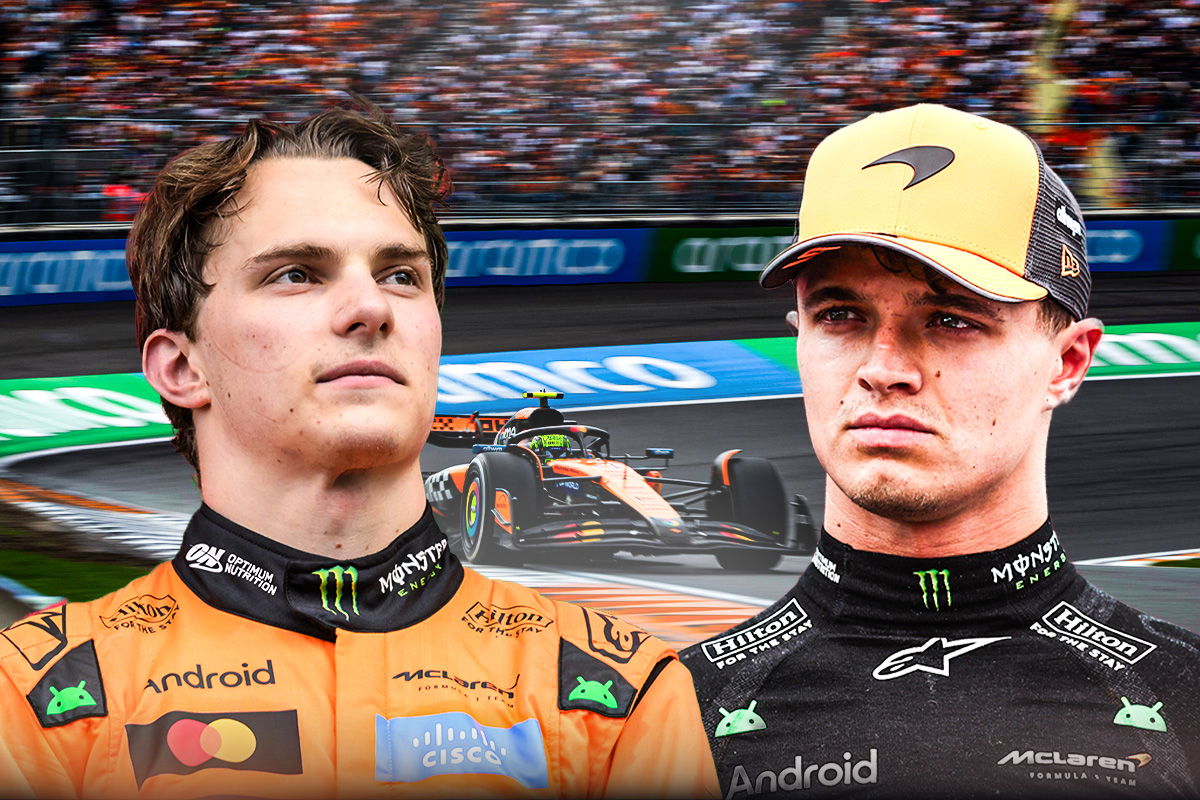

Lightning rarely strikes twice, but McLaren’s $5 B valuation proves the jolt is real. While the orange cars are thundering toward what could be a second straight Formula One constructors’ title, the real fireworks are happening in the boardroom. Well, just recently, McLaren Racing just hit a valuation of $5 billion, leapfrogging Ferrari’s long-held benchmark and muscling its way into the rarefied air as:
Watch What’s Trending Now!
The climb from $757 M in 2020 → $5 B in 2025 is extraordinary. Behind the jump: MSP Sports Capital’s exit at roughly a tenfold return, Bahrain’s Mumtalakat fund holding majority control, and Abu Dhabi’s CYVN Holdings stepping in as a key partner. This isn’t just another turnaround; it’s a sign that Formula 1 is morphing from niche motorsport to global financial engine.
ADVERTISEMENT
Sounds like financial chess, but it points to a bigger question: why is Formula 1 suddenly the playground of the world’s richest investors? That’s where the NFL comes in.
Is Formula 1 really overtaking the NFL?
Ask anyone who owns the money crown, and they’ll say the NFL. And for now, they’re right. But F1, once dismissed as niche, is accelerating so quickly it’s beginning to look less like a challenger and more like a rival.
ADVERTISEMENT
Sure, the NFL owns Sundays with 183M U.S. fans compared to F1’s 52M. But follow the money and the picture changes:
Average F1 team value: $2.31B in 2024
Ferrari: $4.78B
Mercedes: $3.94B
McLaren: $5B after its 2025 stake sale – five years ago, it was just $757M
ADVERTISEMENT
The McLaren Formula 1 team recently sold a stake at a valuation of $5 billion.
That is the highest valuation ever for a Formula 1 team, and it makes McLaren one of the world's most valuable sports organizations. pic.twitter.com/WjnsubSt7d
— Joe Pompliano (@JoePompliano) September 2, 2025
And the surge isn’t slowing down. In 2026, McLaren becomes the McLaren Mastercard F1 Team, a deal worth $100M per year, its first title sponsor in a decade. But can F1 really push the NFL off its perch?
Top Stories
Sean Payton Announces Retirement Plans as Broncos HC Demands Improvement From Bo Nix & Co. Before Playoffs

Greg Biffle’s $4M Worth Prized Possession Still Without a Buyer Leaves NASCAR Fans Heartbroken

LIV Golf Braces for Another Possible Exit in Wake of Brooks Koepka Departure

Biff Poggi All But Confirms Bryce Underwood’s Michigan Future After Announcing His Own Departure

Roger Federer Draws Criticism from Swiss Government Chief for Tourism Boom in Country

NASCAR World Mourns as Former Watkins Glen President Michael Printup Passes Away at 60

Now, the NFL is still the monster in the room. In 2025:
ADVERTISEMENT
Average franchise value: $7.1B (up 25% in a year)
League revenue: $23B in 2024, with $2.5B from sponsorships
Media fortress: Disney, Fox, CBS, NBC, Amazon, YouTube TV paying $1-2.7B each → over $10B annually
Scarcity fuels the machine: just 17 games per team, and everyone feels like gold. But while the NFL rules America, Formula 1 has something the NFL can’t buy: the world.
ADVERTISEMENT
McLaren wants the rest of the world
Unlike the NFL’s U.S. fortress, F1 is global by design. Races in 24 countries, broadcasts in 200+ markets, ESPN paying $90M a year just for U.S. rights. Add Netflix’s Drive to Survive, and Apple is actively pursuing the U.S. broadcasting rights for Formula 1, influenced by the success of its Brad Pitt-led F1 film, which grossed approximately $300 million. But it’s the demographics that make sponsors lean in.
The numbers tell the story:
52M U.S. fans today, with women making up 41%
A younger, more diverse base than almost any sport
$2.9B in sponsorships in 2025 (+128% since 2021)
ADVERTISEMENT
Legacy sponsors like DHL and Heineken are now joined by beauty, fashion, and lifestyle brands. And no team has leaned into this shift harder than McLaren.
McLaren isn’t just a race team anymore. Backed by Mumtalakat and CYVN, it’s rebranding into a luxury lifestyle force. Capsule drops with Abercrombie & Fitch and Reiss blur the line between merch and fashion. So yes, the NFL still wears the crown. It’s older, richer, and baked into American culture. But Formula 1? It’s younger, global at its core, and growing at a pace the NFL simply can’t match.
ADVERTISEMENT
McLaren- the underdog that refused to quit
Back in 2020, McLaren was limping. Reason: the pandemic hit hard, and the team was scrambling just to stay alive. Fast forward five years, and the story couldn’t look more different. Under Zak Brown’s bold vision and Andrea Stella’s steady leadership. But survival was just step one; now they’re building an empire.
In 2024, they won their first Constructors’ Championship in 25 years, and in 2025, with Lando Norris and Oscar Piastri leading the charge, the momentum hasn’t slowed. But, McLaren isn’t just racing in circles; it’s building a racing empire
Their Arrow McLaren IndyCar team is thriving with drivers like Pato O’Ward and Christian Lundgaard, backed by a brand-new Indianapolis HQ that’s nearly triple their old size. And they’re already eyeing the FIA World Endurance Championship in 2027, teaming up with United Autosports to race in the Hypercar class. And the secret weapon? McLaren Applied Technologies. They design the standard ECU for every F1 team through 2030 and supply IndyCar and NASCAR too, while branching into electrification, 5G, and data analytics. But with every boom comes risk.
ADVERTISEMENT
Cracks beneath the crown
Formula 1’s value may be skyrocketing, but behind the gloss, some warning lights are flashing.
Q1 2025 revenues dropped 27% as the calendar shrank with fewer races.
The biggest swing factor: U.S. media rights. ESPN pays about $90M/year, but Liberty Media is pushing for $160–180M in renewal talks. If Netflix or Apple backs out, that revenue forecast suddenly looks fragile.
Insiders are already sparring over the future. Liberty CEO Greg Maffei insists profitability is real, with the cost cap keeping spending disciplined. But Mercedes boss Toto Wolff warns that only sporting integrity, fair competition, and real racing will preserve long-term value. And that’s where the NFL comparison stings: American leagues sit on decade-long broadcast deals and loyal homegrown fan bases.
The weak spots are clear: unpredictable race markets (like the underperforming Las Vegas GP), looming economic slowdowns, and the risk of audience fatigue after years of rapid growth. At the same time, F1 does have safety nets, diverse revenue streams from media rights, sponsorships, hosting fees, merch, F1 TV, strict budget caps that make more teams profitable, and a global base that no other league can touch.
Undoubtedly, the NFL rules on Sundays. But McLaren’s rise shows why Formula 1 is writing Mondays, Tuesdays, and every day after because this isn’t just about racing anymore. It’s about building the future of sport itself.
ADVERTISEMENT
ADVERTISEMENT
ADVERTISEMENT

